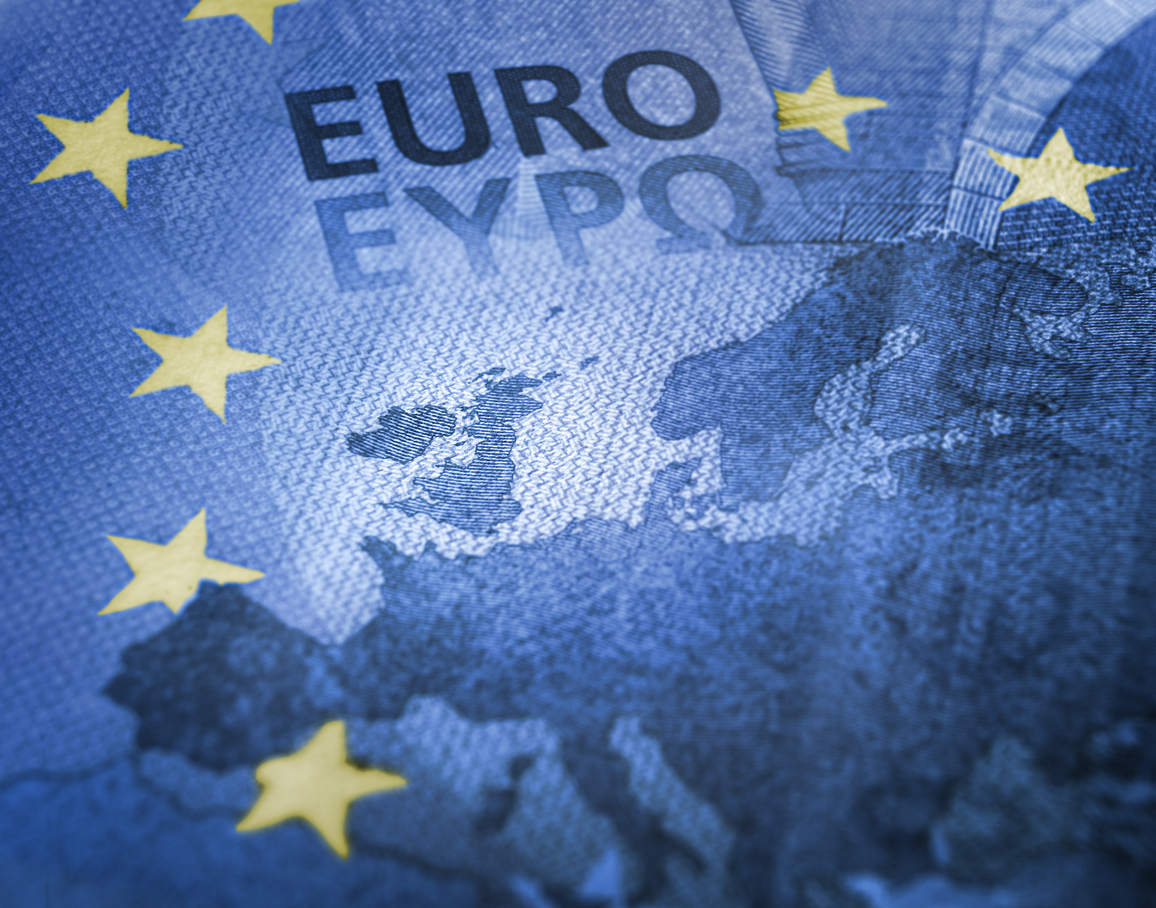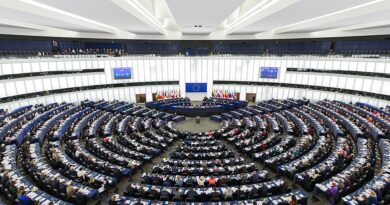The euro’s failure story should make Poland think twice before joining

The single euro currency had the red carpet rolled out for it 25 years ago, but over time it has become synonymous with stagnation and crisis. Meanwhile, Donald Tusk’s government wants to put the Polish central bank’s chairman before the State Tribunal, and commentators say it’s because of his hostility to the euro. But by removing him, Donald Tusk’s liberal-left coalition reportedly wants to open the way for Poland to adopt the euro in another show of contempt for the rule of law.
Jakub Woziński
The first transactions in euros were inaugurated on January 1, 1999. We still had to wait three years for paper currency to appear, but Europeans found themselves in a completely new political reality from the new currency’s first days. After seven years of intensive preparations, the first common European currency in history had begun to be circulated.
Initial enthusiasm
Although there was no shortage of opponents to the euro from the very beginning, this currency’s introduction was mostly accompanied by considerable enthusiasm. This was due to the overly favorable economic and social indicators within the goup of 11 countries that had decided to join the monetary union. The eurozone’s GDP was as high as 15.8% of the world’s total GDP in 1999, second only to the United States (20.8%), while the eurozone itself accounted for 5% of the world’s population. In the following years more member states were to adopt the common currency, which made it possible for many to assume that the whole project was destined to succeed. This became all the more so after the Asian financial crisis of 1997 as well as Russia’s own financial crash a year later, which further contributed to the belief that the rest of the world was so unstable that it could never threaten Europe in its march toward power.
How wrong the creators of the monetary union were in their forecasts is best seen by comparing the data from 1999 with the most recent. Although 20 countries are now members of the eurozone, their combined population now stands at 345 million people, a mere 4.2% of the world’s total population. Demographics alone have yet to decide anything, but an equally puzzling regression can be seen in purely economic indicators. In 2024, the eurozone’s share of global GDP now stands at just under 14%, even though an additional group of nine small countries have joined the eurozone since its creation. Expected economic growth in 2024 across the entire monetary union is expected to only reach 0.8% of GDP, although just 25 years ago, it stood at around 3%.
While the world has already seen many unexpected twists and turns, the decline of the eurozone will only continue in the coming years if there are no dramatic changes. Given the entire community’s demographic decline and the forecasts which assume that the eurozone’s further growth will cease in the coming years, one can be confident that the European monetary union will find itself on a downward spiral, perhaps even threatening to break up altogether.
Coupon clipping
Poland’s mainstream media are still trying to conjure up an image for the public of a completely false, counterfactual image of the euro as a prestige currency that will reflect the strength of a resilient European economy. Such a view was still defensible 15 or 20 years ago. Today, however, it is becoming increasingly untenable given the overwhelming number of facts testifying to the European currency’s disadvantages. Since the 2008 financial crisis, the euro has weakened against the dollar by half. In contrast, since 2001 the average annual productivity growth (measured as GDP per hours worked) in the eurozone has stood at just 0.8%, compared to as much as 1.3% in the U.S. over the same period, and with an average of 1.1% across all the Organisation for Economic Co-operation and Development (OECD) countries.
On paper at least, the euro is still the second-most important currency worldwide. The head of the European Central Bank (ECB), Christine Lagarde, boasts that in its most critical indicators (i.e., the value of its international transactions, the amount of foreign exchange reserves, and the value of loans on the global markets or the share of SWIFT network transactions), the European currency still holds a 20% average share worldwide. As mentioned, however, the euro is on a steady downward trend across most of these prestigious indices. Almost all indicators are converging to indicate that the European currency’s moments of glory are clearly behind it, and that it is now at most in a stage of mere coupon-clipping.
This is shown, for example, by its exchange rate against the dollar, which in the summer of 2022 fell to its lowest level in more than 20 years. Incidentally, the year 2022 was widely regarded as the worst in the euro’s history, as it highlighted the most significant shortcomings of the monetary union’s entire project. The Russian attack on Ukraine exposed all the weaknesses of the German economy, which had always been regarded as the workhorse of the EU as a whole, and in addition made everyone realize that the European economy is incredibly fragile without security guarantees from the United States.
Principles have been tucked far away
One of the main reasons for the euro’s failure is undoubtedly very bad governance. This was most recently demonstrated during the COVID-19 inflation wave. For months, the ECB’s leadership refused to admit that it was facing a huge problem, and only in July 2022 did it raise interest rates. By then, inflation in the Baltic states was already running at more than 20%. This was in sharp contrast to the decisions made by the US Federal Reserve, which moved quickly and was more effective in curbing price increases.
A more glaring example of the monetary union’s disastrous management, however, is its fiscal discipline, which was lost in the aftermath of the eurozone debt crisis. The Maastricht Treaty initially prohibited the ECB from purchasing the Member States’ debt. This rule was broken at the beginning of the last decade in order to save indebted Member States from bankruptcy and the eurozone itself from collapse. Extraordinary solutions quickly became the order of the day, and continued. As if that weren’t enough, through the new recovery fund (NextGeneration EU) the European Commission has assumed over 800 billion euros of debt on behalf of all Member States, none of which is not officially included in any Member State’s budget. The monetary union’s original rules stipulated that each Member State should maintain a high level of fiscal discipline. But how can this goal be achieved if the most important EU bodies violate these basic rules themselves?
The lack of proper discipline has likewise been accompanied for years by excessive optimism in the EU’s forecasts. Even various academic studies have been devoted to this phenomenon. EU policymakers have been looking at economic reality through rose-tinted glasses for years. They have also recently become fanatics of the Green ideology, which, when put into practice with great zeal, pushes the European economy toward an ever more marginal position. No one in the world is currently issuing more Green bonds than the eurozone countries, and they are distancing themselves from the rest of the planet in this respect.
How the single currency is managed also reveals the Eurocrats’ thinking about economic growth and development. If the EU had a sound approach to the economy, policymakers would prioritize competitiveness and create opportunities for business growth and innovation. The euro’s position in global markets would reflect the EU economy’s strength. But in fact the exact opposite has been happening for many years, and in a sense the burden of dragging the entire economy forward has been shifted to the euro. Instead of forcing themselves to lower the tax burden or reduce regulations, the Eurocrats have been preparing successive stimulus packages for a dozen years, with the ECB always playing a leading role. Applying this kind of mechanism to Poland would mean that we would get stuck in the same type of stagnation as the Western European countries.
Time for Poland to leave the EU as rising costs now exceed benefits
Flight into digital authoritarianism
The most recent efforts to introduce a digital euro are in themselves a summary of the eurozone’s course. Work on this project officially began as early as July 2021, and after two years of preliminary studies, the so-called preparatory phase has already started. In theory, the transition to a digital currency does not have to end, but – as usual in the EU – solutions that maximize the powers of the central authority are being adopted regardless of the circumstances. Moreover, key decision-makers talk about the digital euro with such pride and enthusiasm that the question of its introduction is almost a foregone conclusion (this was confirmed, for example, by Ursula von der Leyen in her speech on the occasion of the ECB’s 25th anniversary).
It is worth noting that economic considerations do not dictate the idea of introducing the digital euro. According to the official communiqués published by the ECB, the digital euro primarily aims to remedy the lack of a free and efficient pan-European payment system. But the problems in the eurozone are not the result of imperfect information technology systems. It has been mentioned only incidentally that a digital currency is meant to counter increasing competition from new payment systems popularized by Big Tech and the growing popularity of cryptocurrencies.
The Eurocrats’ perception of the threat from Big Tech is symptomatic here, as the European Union has not developed a globally significant representative in this industry. The coincidence of the timing of the tech industry’s lush growth in other regions of the world, and the gradual withering away of the single currency project over the past quarter century, can be considered as purely coincidental. The facts, unfortunately, speak for themselves. The turn to the digital euro is a clear sign that EU policymakers are trying to respond to this deepening lag with a move toward money of a decidedly totalitarian character. Concentrating their power over money as well as over their knowledge of their citizens’ transactions cannot end well.
Homogenization – or in other words, a federalized state
The second most crucial idea for reviving the euro project, as is being discussed in Europe’s grand salons, is creating a federalized European state. In this context, it is invariably pointed out that the EU still has enormous and untapped potential that is being blocked by the “economic heterogeneity” of its constituent economies. In other words, only full political integration – i.e., subordination – can unlock the energy needed to revitalize the entire continent and help to integrate its financial markets.
But the push toward political and economic homogenization within the EU can only bring an even greater disaster. The common market has long provided almost everything the Member States could achieve regarding unification. Any further steps in this area would mean de facto deprivation of the Member States’ sovereignty. Yet, thanks to this factor there is still a mechanism in the EU for individual countries to compete and work out economic growth.
So, as we can see, the problem with the euro is not only the many mistakes made in the past, but also the wholly misguided and dangerous ideas for it in the future. These make it hard to talk about the euro after 25 years in terms of its being a real success. It is an exaggeration to say that the single currency has been a complete flop, but its original potential has mostly been squandered.
A quarter of a century ago, it was assumed that the monetary union would accelerate the convergence of its member economies. But in the meantime, it is evident that the old divisions have only perpetuated and, in some cases, even strengthened. As far back as five years ago, when analyses were made of the single currency’s first two decades, it was pointed out that the circle of financial beneficiaries was extraordinarily modest and included mainly countries such as Germany, the Netherlands, and Luxembourg. Very little has changed since then, and it is hard to expect otherwise given that the entire eurozone has completely stagnated since 2008.
The processes bringing about the common currency’s decline intensify almost every month, and it is not impossible that if only Poland keeps the zloty for at least the next decade, the question of joining the eurozone will be practically resolved. Unless there are truly fundamental changes by then, the euro will have lost much of its prestige and importance. Europe is mainly weakening today because an unnecessary monetary union burdens it. In turn, each successive year will reveal the brutal truth about this common currency, whose aim from the beginning was reduced to political control and had little to do with economic development.
This article was first published in Polish in the Do Rzeczy weekly in March 2024.



